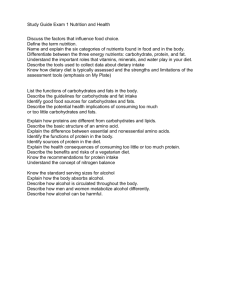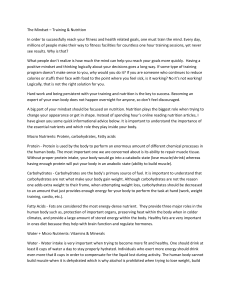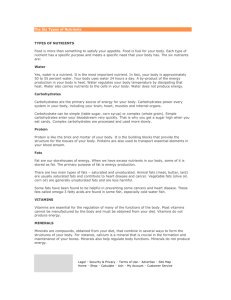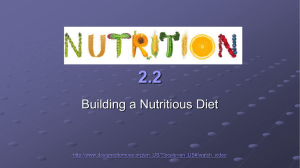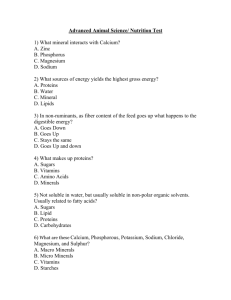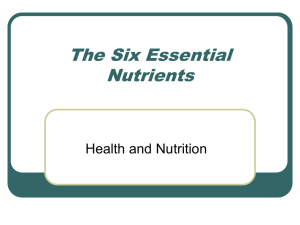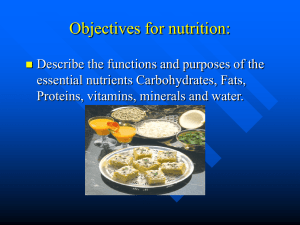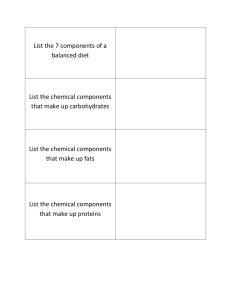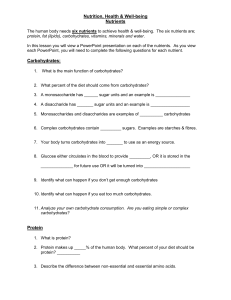Chapter 9 Outline
advertisement
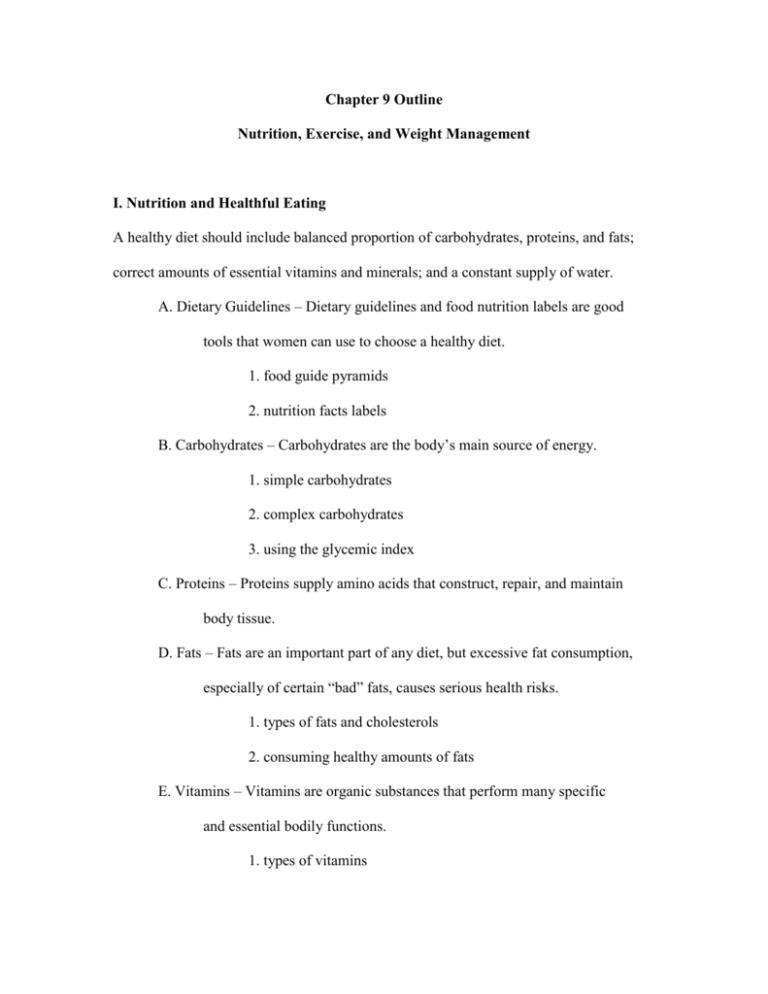
Chapter 9 Outline Nutrition, Exercise, and Weight Management I. Nutrition and Healthful Eating A healthy diet should include balanced proportion of carbohydrates, proteins, and fats; correct amounts of essential vitamins and minerals; and a constant supply of water. A. Dietary Guidelines – Dietary guidelines and food nutrition labels are good tools that women can use to choose a healthy diet. 1. food guide pyramids 2. nutrition facts labels B. Carbohydrates – Carbohydrates are the body’s main source of energy. 1. simple carbohydrates 2. complex carbohydrates 3. using the glycemic index C. Proteins – Proteins supply amino acids that construct, repair, and maintain body tissue. D. Fats – Fats are an important part of any diet, but excessive fat consumption, especially of certain “bad” fats, causes serious health risks. 1. types of fats and cholesterols 2. consuming healthy amounts of fats E. Vitamins – Vitamins are organic substances that perform many specific and essential bodily functions. 1. types of vitamins 2. folic acid 3. antioxidants and phytochemicals F. Minerals –The human body needs several minerals to function properly. For women, calcium and iron are especially important. 1. what minerals are 2. calcium 3. iron G. Water – Water is an essential, often overlooked nutrient. II. Exercise and Fitness Regular exercise brings many health benefits. An ideal exercise program should include aerobic and strength-training sessions and should continue throughout a woman’s lifespan. Exercise abuse brings many health risks and should be avoided. A. Physical fitness 1. benefits of exercise 2. components of physical fitness B. Types of exercise 1. warm-ups 2. strength training 3. explaining aerobic exercise 4. types of aerobic exercise 5. cool-downs C. Physical fitness and women 1. cultural gender differences 2. biological gender differences 3. exercise myths and facts D. Exercise and aging E. Exercise abuse 1. excessive exercise 2. steroid use III. Maintaining a Healthy Weight Maintaining a healthy weight requires balancing the number of calories consumed with the number of calories burned through daily activities. A healthy weight-loss program should incorporate both a balanced diet and a regular exercise routine to be effective. A. Body mass index and weight distribution B. What causes weight gain C. Overweight and obesity 1. trends 2. health risks 3. economic costs D. How women can lose weight E. How not to lose weight F. Other weight-loss strategies IV. Body Image and Shape Society has a very strong influence on how women see themselves. Unfortunately, in the U.S., this influence often causes women to hate their bodies or to adopt unhealthy behaviors. A. Body image and popular culture B. Ethnic, cultural, and religious influences C. Eating disorders V. Global Perspectives on Hunger Malnutrition and hunger kill millions of people every year. Women and their young children are especially vulnerable. A. Defining hunger and malnutrition B. Conditions caused by nutrient deficiency VI. Informed Decision Making Staying healthy requires a lifetime commitment to eating a balanced diet, exercising regularly, and maintaining a realistic, non-hateful body image. For each of these behaviors, specifics are less important than keeping up the habit.
